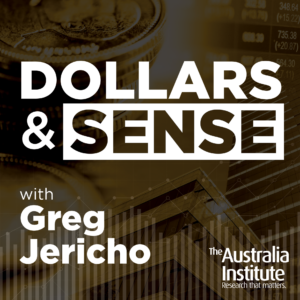Despite what the fearmongers would have you believe, the latest inflation figures showed that inflation remains well under control.
Not only is there no need for any more rate rises, but doing so would only increase the likelihood of unemployment rising, with little actual impact on inflation.
There’s always danger with reporting on inflation figures because there’s more than enough figures flying around to enable commentators and politicians to push out a scare quote that has people thinking inflation is running rampant and, God help us, we’ll be soon carting around our money in wheelbarrows.
I say calm down.
We were once told that the “non-accelerating rate of unemployment” – the level of unemployment needed to stop inflation from rising – was around 4.5%. Right now unemployment is at 3.8% and yet annual inflation actually fell (or “decelerated”) from 4.1% to 3.6%.
That is fantastic news.
The 3.6% means inflation has fallen from the peak of 7.8% at much the same pace it rose to those heights:

The expectations were for a lower figure, and certainly the 1% March quarter increase is higher than we would get in normal times.
But let us look at what drove that increase. We know the Reserve Bank likes to worry about the rise in services prices, because services are generally labour intensive and therefore price rises can mean that wages are rising faster than the RBA would like.
And yes, services did account for a large proportion of the 1% rise in the March quarter.
But what type of services? Rent for example is classed as a service, and that was the biggest contributor to total inflation growth:

Just after rents came other service price rises like education (which always rises in March) and medical services. Down at the 10th biggest contributor to inflation growth came the service price rises of insurance.
I look forward to being told by those thinking the RBA should raise rates to explain how a rate rise will slow the cost increases of rents, education, hospital services and insurance.
The inflation growth of 3.6% does however mean real wages are now growing. The only problem is, although they have increased about 0.5% over the past year, they are still 6% below where they were three years ago:

Non-discretionary items also continue to rise faster than those items which people can do without (or at least can put off buying until some later date). That means those on lower incomes are still hit harder by price rises than those in wealthier households.
Rent rises have been particularly tough for people across most of the country. Perth in particular has borne a massive hit. The 9.9% rent rise over the past year is the fastest rise there since the peak of the mining boom in 2008:

Earlier this month I suggested the RBA is unlikely to either cut or raise rates, and these latest figures do nothing to change my views on that.
The RBA won’t cut rates unless unemployment rises sharply (which it hasn’t) or until inflation is well into the 2% to 3% range.
What we are seeing is that the share of prices of the 87 items in the CPI basket of goods and services that are increasing by more than 5% is dropping. At the end of 2022, two-thirds of all items in the CPI basket were rising in price by more than 5% a year; now that is back to one-third of all items:

But the March quarter CPI figures are one of those odd economic numbers that actually have real consequences for people. The March figure is the last determinant of how much Hecs/Help debt will rise on 1 June.
The formula sees an indexation on debt of 4.75% (which probably will be rounded up to 4.8%).
That means those in their 20s with an average Hecs/Help debt will see their debt rise even after they make their compulsory repayments:

That was not how the system was meant to work. It is a consequence of the lowering of the repayment thresholds, the strong rise in prices that means indexation rises much more than anyone would have planned when undertaking their degree and also the increase in the cost of a degree that now mean people have much more Hecs/Help debt than in the past.
The government will not be crowing about the latest CPI figures, but neither should it be panicking. There is no sign of anything other than a steady, if slow return to inflation below 3%. If it takes slightly longer than hopes for that to occur, so long as inflation is not accelerating there is little cause for great concern.
Indeed, given unemployment is at 3.8%, it is clear that there is no need for unemployment to rise to 4.5% as the RBA had once suggested to stop inflation rising.
But for those with Hecs/Help debts, the concern is very much present, and the pressure is on the government to deliver in the budget a fix to the Hecs/Help system that now looks quite broken.
Between the Lines Newsletter
The biggest stories and the best analysis from the team at the Australia Institute, delivered to your inbox every fortnight.
You might also like
Okay, it’s not ALL Greg’s fault
Just some things.
More evidence that inflation is under control – but where is the RBA?
Inflation is under control and the economy is barely staying out of recession. But the Reserve Bank has decided to take more than 2 months off before deciding if a rate cut is needed.
Greg’s budget wishlist
The Australian Government can’t afford to do everything, but it can afford to do anything it wants.


